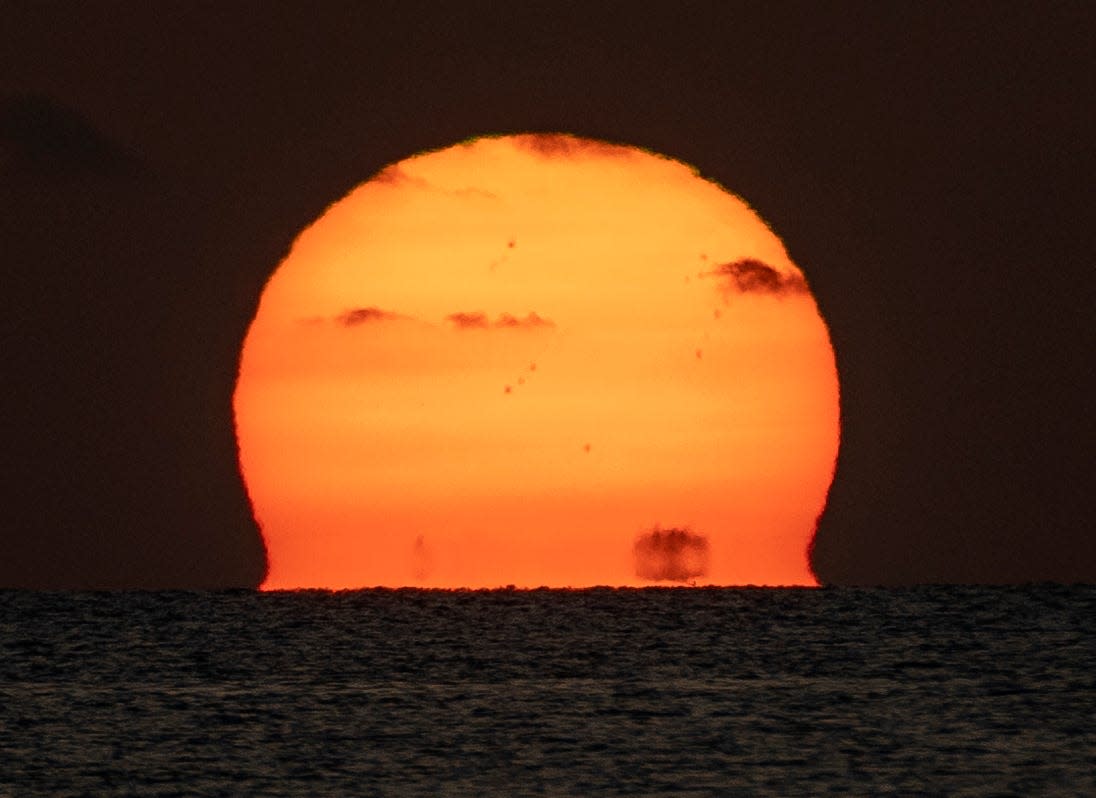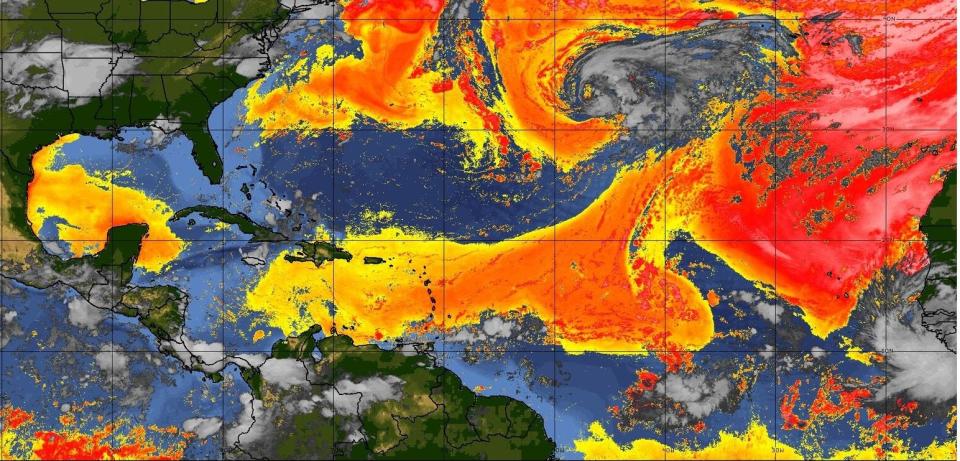Omega sunrise seen in South Florida during a heat wave with high sea surface temperatures

The sun oozed orange and fiery from the Atlantic Ocean last week as if being pulled from a smelter dripping molten heat in the shape of the omega, or an unlucky horseshoe or a melting scoop of ice cream.
It’s a curious optical illusion where the bottom of the scorching star appears attached to a second sun also rising from the water mimicking the shape of the last letter of the Greek alphabet.
The phenomenon of the omega sun, which can occur sunup or sundown, happens when very warm air at the surface cools rapidly as it rises higher in the atmosphere, refracting sunlight upward in a nearly U-shaped bend.
Lunar magic trick: The full moon may look huge, but it’s just an illusion
Why is the sunrise shaped like an omega?
The shape is a function of an inferior mirage. Although mirages are often associated with desert climates, they can occur on any flat surface with the right atmospheric conditions. The bottom of the sun where it appears to flare out is an inverted image of the sun directly above it. It happens when rays of light bend up toward the observer, producing an upside-down image.
Too hot outside? 17 best indoors activities to beat the heat in Palm Beach county
Why did the omega sunrise occur?
Much of the southern U.S. from Arizona to South Florida has been caught in a pattern of unusually warm temperatures. In Palm Beach, Broward and Miami-Dade counties temperatures have hit highs in the mid-90s with “feels like” temperatures up to 110.
The heat has also led to higher sea surface temperatures, which in the Gulf of Mexico around southwest Florida were in the low 90s, and as much as 7 degrees warmer than normal. Off the southeast coast of Florida, sea surface temperatures were as high as 88 degrees, which is 4 degrees above normal.
There are a lot of people who have a hard time with the "anomaly" term. Regarding the water temperatures around Florida (and the Gulf), yes they are very warm, and yes they are typically warm this time of year. But they are wayyyyy hotter than normal for this time of year! 🙄 pic.twitter.com/3oH3TrkH9N
— Brian McNoldy (@BMcNoldy) July 10, 2023
“The high sea surface temperatures are warming the air near the surface,” said National Weather Service meteorologist Donal Harrigan. “We have sea surface temperatures that are higher than what is in the Gulf Stream.”
Temperature changes make a difference in how an omega sunrise appears
Inferior mirages can be subtle if there is only a small temperature difference between the surface air and that above it because it reduces the thickness of the layer of air that produces the image.
A large temperature difference, or more dramatic change in temperatures with height, makes the image more conspicuous.
Wet and hot: Heat wave in South Florida will last through the week with 'feels like' temperatures topping 100
How did Saharan dust contribute to the illusion?

Barry Baxter, a meteorologist with the NWS in Miami, said the plume of Saharan air that was drifting over South Florida early in the week acted as a cap over warm temperatures. Once the air was able to breach that cap, it cooled rapidly, helping create the mirage.
A blast of Saharan dust leaves the coast of Africa every few days this time of year so there may be more chances to catch an omega sunrise, or on the west coast, an omega sunset this summer.
Kimberly Miller is a veteran journalist for The Palm Beach Post, part of the USA Today Network of Florida. She covers real estate and how growth affects South Florida's environment. Subscribe to The Dirt for a weekly real estate roundup. If you have news tips, please send them to kmiller@pbpost.com. Help support our local journalism, subscribe today.
This article originally appeared on Palm Beach Post: Heat wave across the south U.S. and Florida led to an omega sunrise

